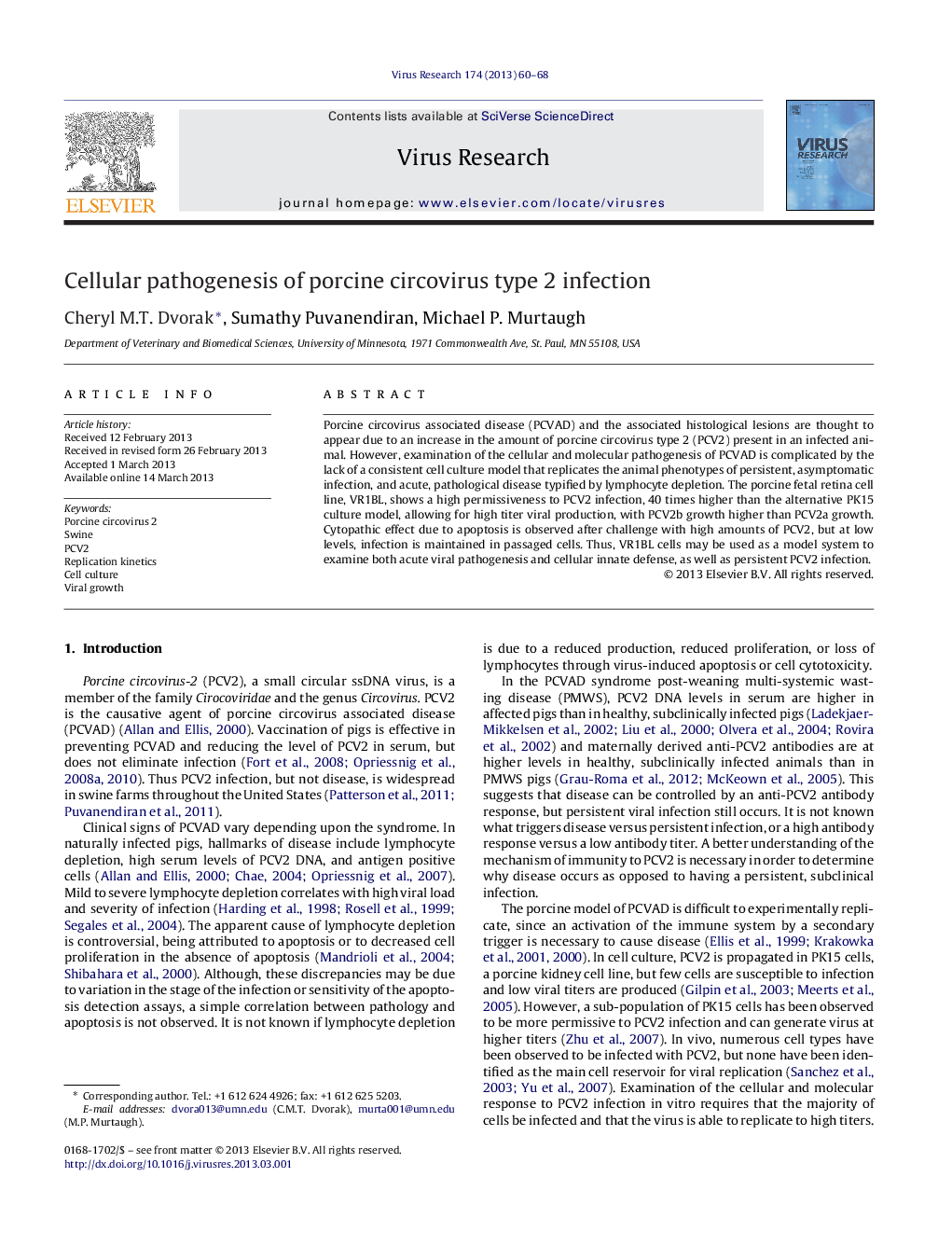| Article ID | Journal | Published Year | Pages | File Type |
|---|---|---|---|---|
| 3428591 | Virus Research | 2013 | 9 Pages |
•A porcine cell line, VR1BL, was characterized for high titer growth of PCV2.•PCV2 grows to higher titers in VR1BL cells, than in PK-15 cells.•This cell line provides an in vitro model of acute versus persistent infection that replicates in vivo behavior of PCV2.•High MOI infection induces apoptosis-mediated cell death.
Porcine circovirus associated disease (PCVAD) and the associated histological lesions are thought to appear due to an increase in the amount of porcine circovirus type 2 (PCV2) present in an infected animal. However, examination of the cellular and molecular pathogenesis of PCVAD is complicated by the lack of a consistent cell culture model that replicates the animal phenotypes of persistent, asymptomatic infection, and acute, pathological disease typified by lymphocyte depletion. The porcine fetal retina cell line, VR1BL, shows a high permissiveness to PCV2 infection, 40 times higher than the alternative PK15 culture model, allowing for high titer viral production, with PCV2b growth higher than PCV2a growth. Cytopathic effect due to apoptosis is observed after challenge with high amounts of PCV2, but at low levels, infection is maintained in passaged cells. Thus, VR1BL cells may be used as a model system to examine both acute viral pathogenesis and cellular innate defense, as well as persistent PCV2 infection.
